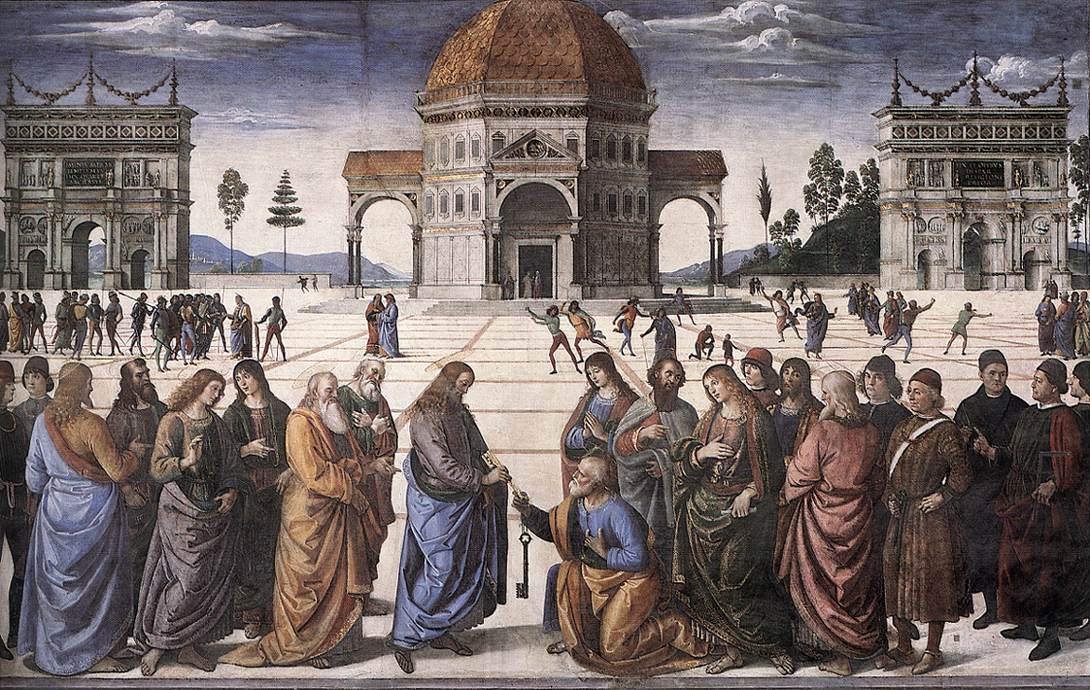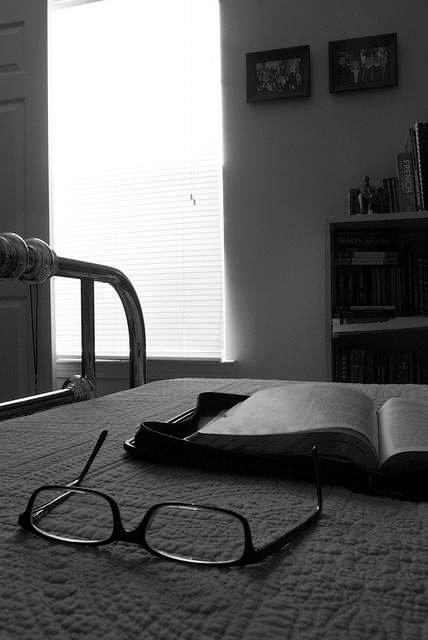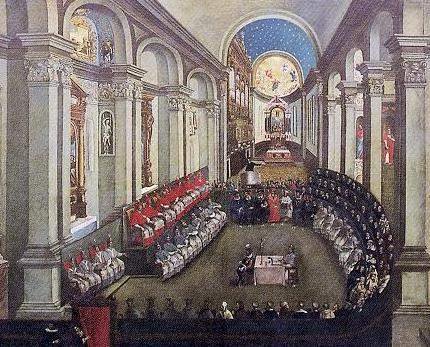Here’s another brief analogy I thought of for the authority of the Church:
 Take the United States Constitution. It’s a two hundred-year-old document that has been amended twenty-seven times, and has been subject to constant and continuous interpretation and reinterpretation throughout its history. Suppose, though, you hand it to the founders of a new republic, and ask them to re-create the American government from nothing but that document. They could probably come up with something — but it would be rough, lacking definition. The Constitution lays out the framework of government that needs to exist, but it conveys nothing of how to implement such a government. It conveys nothing of the historical context in which the document was produced. It conveys nothing of the specific interpretations and definitions that have been worked out by the courts over the years.
Take the United States Constitution. It’s a two hundred-year-old document that has been amended twenty-seven times, and has been subject to constant and continuous interpretation and reinterpretation throughout its history. Suppose, though, you hand it to the founders of a new republic, and ask them to re-create the American government from nothing but that document. They could probably come up with something — but it would be rough, lacking definition. The Constitution lays out the framework of government that needs to exist, but it conveys nothing of how to implement such a government. It conveys nothing of the historical context in which the document was produced. It conveys nothing of the specific interpretations and definitions that have been worked out by the courts over the years.
In the United States, we’ve inherited a rich and complex legal tradition, not just from the Founding Fathers and the Constitution, but from English common law, several centuries of statute law, and other precursors and precedents. Whatever your position on constitutional interpretation — whether you are a strict constructionist, believing that the Constitution means what it says, on its letter, and that we should follow the original intent of our Founding Fathers in writing it; or a loose constructionist, believing that the Constitution is a living document, constantly evolving with the nation’s views — our understanding of the Constitution is informed by our legal tradition. To understand the original intent of the Founders, we have to read what they wrote and understand what they believed. To understand the Constitution as a living document, we have to understand the definitions and interpretations that legal minds of the past have hammered out. To create a replica of the United States government, we would need not just the Constitution, but the web of statutes that Congress has woven to implement it.
The Supreme Court, by virtue of holding the entire, unbroken legal tradition of the United States in its hand, and of being made up of nine men and women held to be learned and capable legal minds, is the highest authority of law in our nation. It alone has the power to interpret the Constitution with binding effect. In making their decisions, the justices of the Supreme Court consider all of the resources at their disposal: case law, the past decisions of the Court, the writings of the Founding Fathers and other legal minds, just to mention a few. Those decisions and those thinkers haven’t all agreed with each other, it is true; but considering this entire body of law, the Court can arrive at the correct interpretation. The Supreme Court has the authority to interpret the Constitution because that is the authority it was given; that’s what it was created to do; that is its purpose.
Likewise, the Church, by virtue of holding the entire, unbroken tradition of the teachings of Christ and the Apostles in her hand, and of being made up of the body of bishops held to be learned and authoritative by their merits and their inheritance from the Apostles themselves, has the authority to interpret the Scripture and Tradition of the Church. In making her decisions, the Church considers all of the resources at her disposal: Scripture itself, the writings of the Church Fathers, the dictates of bishops and popes and councils over the ages, just to mention a few. Most of all, she prays and seeks the guidance and discernment of the Holy Spirit. The Church has the authority to interpret Scripture and Tradition because that is the authority she was given by Christ — the authority to bind and loose, to decide points of interpretation of the law with binding effect, given explicitly to St. Peter.
Handing the Constitution alone to founders of a new government, detached from its history and tradition, is like handing the Bible to a new religious sect and asking them to create a church, sola scriptura. This is essentially what many Protestant groups have done — sought to create a “pure,” “biblical” church, with Scripture alone as their guide, without any accretions of tradition. Some have taken it further than others. Most Protestants, whether they admit it to themselves or not, are as rapt followers of tradition as any Catholic: they follow, with little deviation, the traditions of Luther, or Calvin, or Cranmer, or Knox, or Wesley, or even of their own grandfathers or great-grandfathers. Tradition pervades the way they worship, the way they practice, and most of all the way they interpret Scripture. They adhere to a body of essential Christian tradition that not even Protestants have abandoned: Sunday worship; the shepherding of a Christian flock by a pastor; the liturgical practice of baptism and Communion; the celebration, according to an established liturgical calendar, of Easter and Christmas; the canon of Scripture itself. Take even a “contemporary,” “hip,” “non-denominational” evangelical “worship center.” A worship service will begin with songs, followed by a sermon, in a tradition of order as ancient as the Church, but found nowhere in the Bible. Typically such a church’s doctrine — whether it even admits it has doctrine — is loosely Reformed or loosely Arminian; relaxed but nonetheless exclusive of certain doctrines rejected by the Protestant tradition (“oh, we definitely don’t believe that“). If sola scriptura is followed as rigidly as some Protestants insist, then some practices and doctrines must be excluded because they are not explicitly described in the Bible — for example, the Churches of Christ’s insistence on no instrumental worship, or the Seventh-Day Adventists’ insistence on Saturday worship. A church that literally followed sola scriptura, with no inkling of tradition anywhere in it at all, would be a strange-looking beast indeed.




